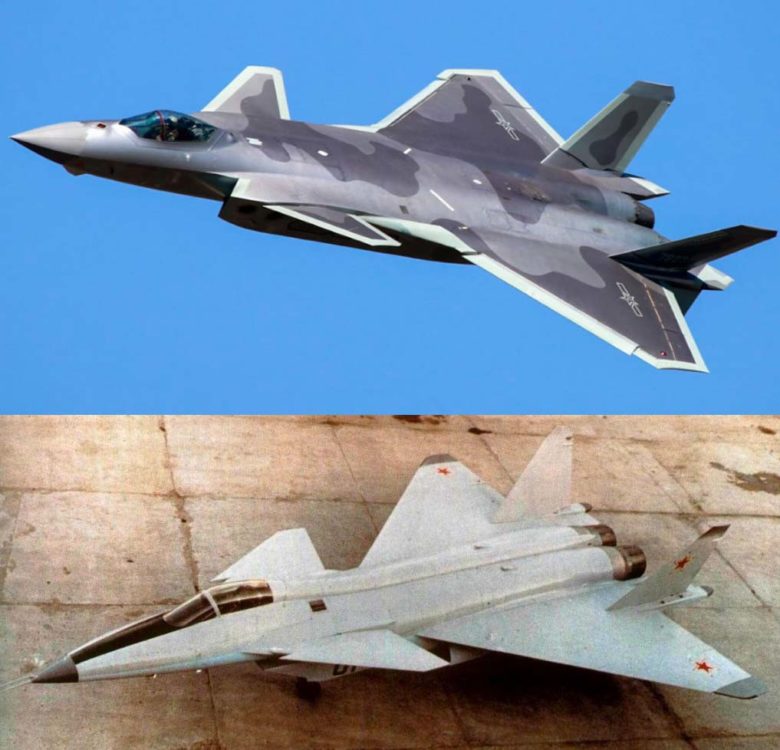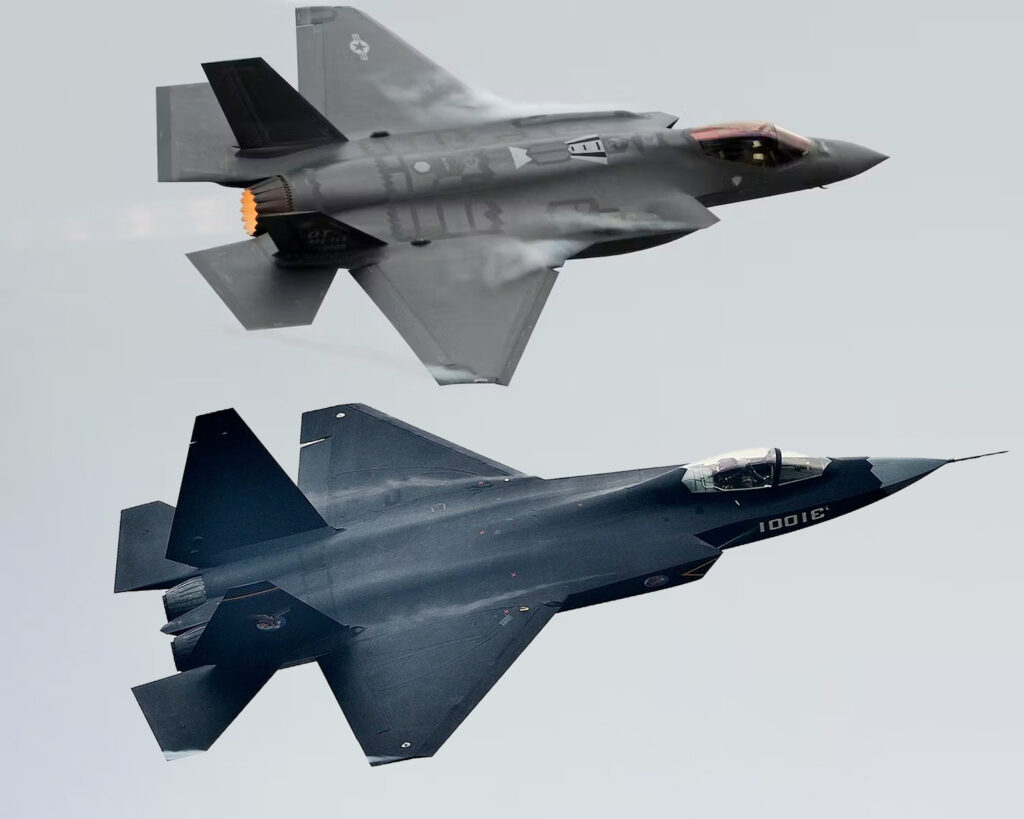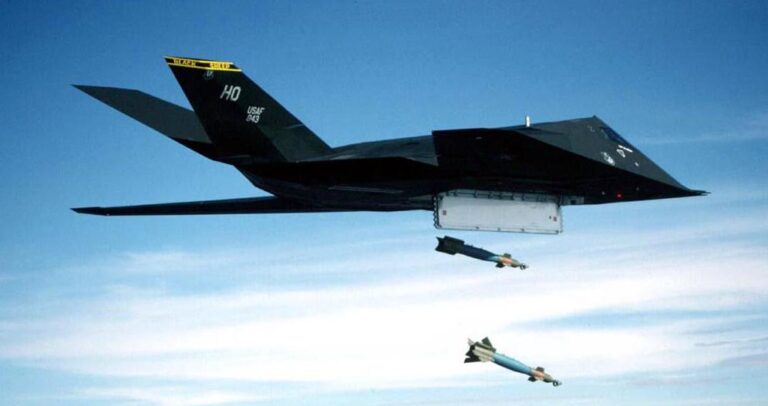Pakistan wants to fly Chinese stealth fighters alongside its F-16s
- By Alex Hollings
Share This Article

Pakistan’s senior air force official announced plans to purchase Chinese stealth fighters last week, potentially making Pakistan the first foreign partner to purchase 5th generation fighters from China.
During an induction ceremony for a variety of new military equipment held on January 2, Air Chief Marshal Zaheer Ahmed Baber Sidhu announced the forces’ intentions to purchase Chinese FC-31 Gyrfalcon fighters, according to reporting by Defense News. This reporting was seemingly confirmed by a post on the Pakistan Air Force (PAF) Facebook page shortly thereafter.
Pakistan is interested in buying FC-31.
— Zhao DaShuai 东北进修🇨🇳 (@zhao_dashuai) January 3, 2024
The details are subject to further negotiations, but it's unlikely we'll sell the AF version of the J-35 (more developed form of FC-31).
It's more likely a bespoke version of FC-31 for Pakistan
1/2 pic.twitter.com/X4PdRNSpAy
The FC-31 is China’s second indigenous stealth fighter, which is currently in development for service aboard Chinese aircraft carriers, but has had an eye toward the export market since its inception.
The United States has long maintained a complex and often strained relationship with Pakistan – a country that was seen as a strategic partner at times throughout both the Cold War and the Global War on Terror, but that has also been accused of harboring and supporting terrorist regimes. Today, Pakistan’s primary fighter is the American-sourced F-16 Fighting Falcon, with the country having about 85 operational platforms.
Pakistan’s hostile relationship with neighboring India, which has also been the source of tensions with the United States, has served to deepen military cooperation with China. Pakistan’s relationship with China is often described as “all-weather,” with deep strategic ties extending throughout economic, diplomatic, and military sectors.
Related: How F-16s will make the radar-hunting missiles of Ukraine much more capable
The FC-31/J-35 is China’s second stealth fighter design

The acquisition of FC-31 fighters would make Pakistan the first third-party country ever to purchase stealth aircraft designed outside the United States. Stealth, or low observable, aircraft designs are meant to delay or prevent detection by adversary systems, allowing them to operate inside contested airspace with greater survivability. The US has long maintained a monopoly on stealth aviation, as the only nation on the planet operating stealth aircraft from 1983 until 2017, when China’s first stealth fighter, the Chengdu J-20, entered operational service.
Today, it’s estimated that China has somewhere north of 250 J-20s built, giving it the distinction of operating the world’s second-largest fleet of stealth aircraft. The Shenyang FC-31 Gyrfalcon is the nation’s second stealth effort, developed independently of Chengdu’s J-20 program.
The fighter was meant to be a lower-cost 5th-generation entry with an emphasis placed on the export market, but analysts were quick to point out that the smaller and lighter design may eventually see service aboard China’s growing fleet of aircraft carriers as a replacement for the country’s long-troubled fleet of 4th-generation J-15s. In October 2021, those suspicions were confirmed when a modified carrier-capable iteration of the FC-31, dubbed the J-35, took flight for the first time. According to reports, the Chinese air force has also expressed interest in the platform as a lower-cost addition to its J-20 fleet.
To date, there has been no official word as to when this J-35 could see operational service, though some estimates suggest it could be as soon as 2026.
Related: Offsetting China’s stealth fighter advantage
How does the FC-31 compare to other stealth fighters?

While China’s larger twin-engine J-20 is meant to fill an air-superiority role akin to the F-22 Raptor, the FC-31, and its Naval J-35 variant, are smaller twin-engine aircraft designed to compete with multi-role fighters like the F-35. In keeping with China’s longstanding approach to aviation design, both the J-20 and FC-31 borrow heavily from foreign fighter designs, with the J-20 often described as an amalgam of the long-defunct Soviet MiG 1.44 stealth fighter program infused with Lockheed Martin-derived low-observable design techniques.
While Russian officials have accused Chengdu of stealing elements of the MiG 1.44’s design, evidence to that effect has largely been circumstantial to date. China’s efforts to steal American stealth fighter designs, however, have been thoroughly confirmed, with a Chinese National named Su Bin ultimately charged with the cyber theft of secrets related to the design of many American military aircraft – including the F-22 and F-35 – in 2014.

In Su Bin’s e-mails to his Chinese government contacts, which were later entered as evidence in his trial, he openly gloated about how the stolen documents would “allow us [China] to catch up rapidly with U.S. levels … [and] stand easily on the giant’s shoulders.”
Su was ultimately sentenced to 46 months in Federal Prison for the theft in July 2016.
That is to say that the FC-31’s aesthetic similarities to America’s F-35 aren’t necessarily a coincidence. Because of the lack of transparency within Chinese state media, details about the FC-31’s actual capability set remain nebulous at best.
Current FC-31s in testing are reportedly powered by two Russian-sourced RD-93 afterburning turbofan engines that are each capable of producing about 18,300 pounds of thrust, though China has expressed plans to use domestically-sourced equivalent WS-13s that may increase power output to a combined 39,200 pounds of thrust with afterburners lit.

With an estimated maximum takeoff weight of 56,000 pounds, that could place the FC-31 on similar performance footing as the slightly larger and more powerful single-engine F-35. The American jet is powered by a Pratt & Whitney F135 afterburning turbofan engine that can pump out around 43,000 pounds of thrust under afterburner in a platform with a maximum takeoff weight of some 65,000 pounds. However, it’s important to note that the F135 is not just a more powerful engine, it’s also more advanced when it comes to reducing both radar and infrared (heat) signatures.
Broadly speaking, the FC-31, like its J-20 sibling, is not expected to be able to match America’s F-35 or F-22 in terms of preventing detection, thanks in large part to America’s multi-decade head start on the technologies involved in fielding truly stealth platforms, but that doesn’t mean the FC-31 wouldn’t represent a significant leap in low-observability over fourth-generation airframes like China’s J-15 or Pakistan’s F-16s.
In other words, the FC-31 may not be able to match the F-35 pound for pound, but could likely outperform many of the older 4th generation aircraft it might run across in a 21st century conflict.
That is, of course, if the aircraft ultimately lives up to China’s claims.
Read more from Sandboxx News
- More than a century after WWI, war continues to be the same in Ukraine
- Special Operations Command’s commando aircraft are in jeopardy
- US Navy helicopters sink 3 Houthi attack boats attempting to seize cargo ship
- GE’s hypersonic rotating detonation engine breakthrough could change aviation forever
- Fighter pilot breaks down how aerial refueling works
Related Posts
Sandboxx News Merch
-

‘AirPower’ Classic Hoodie
$46.00 – $48.00Price range: $46.00 through $48.00 Select options This product has multiple variants. The options may be chosen on the product page -

‘Kinetic Diplomacy’ Bumper Sticker (Black)
$8.00 Add to cart -

‘Sandboxx News’ Trucker Cap
$27.00 Select options This product has multiple variants. The options may be chosen on the product page

Alex Hollings
Alex Hollings is a writer, dad, and Marine veteran.
Related to: Airpower

Frosted misery: A Navy SEAL in SERE School

How US Special Forces took on Wagner Group mercenaries in an intense 4-hour battle

The social hierarchy of US special operations units

It took more than stealth to make the F-117 Nighthawk a combat legend
Sandboxx News
-

‘Sandboxx News’ Trucker Cap
$27.00 Select options This product has multiple variants. The options may be chosen on the product page -

‘AirPower’ Classic Hoodie
$46.00 – $48.00Price range: $46.00 through $48.00 Select options This product has multiple variants. The options may be chosen on the product page -

‘AirPower’ Golf Rope Hat
$31.00 Select options This product has multiple variants. The options may be chosen on the product page -

‘Sandboxx News’ Dad Hat
$27.00 Select options This product has multiple variants. The options may be chosen on the product page
